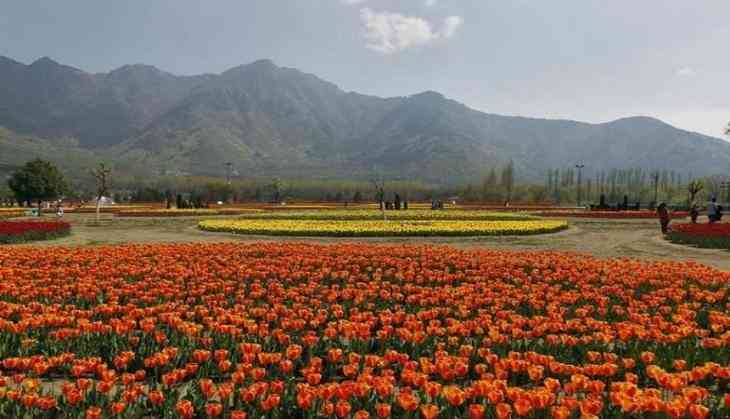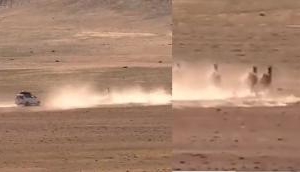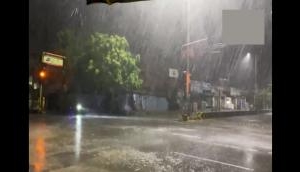Kashmir's snow-less winter: Why this bodes ill for the Valley

Bright blue skies and the dazzling sunny days have greatly eased the life in Kashmir this winter. Except that nobody wants it that way: a snow-less and cold-less winter doesn’t bode well for the summer ahead. Without fresh addition of snow to the already depleted glaciers there will be a corresponding decline in the discharge in rivers and streams which in turn will impact agriculture.
A snowless winter has another troubling dimension: according to scientists it signals the impact of the worldwide climate change sneaking ever so closer to the Valley. Data reveals that in the past 28 years alone, nine winters have passed more or less snowless, a frequency that has created a deep sense of alarm.
“If we go through the data of the past 127, we have had some snowless Chilai Kalans (the harshest 40 day period of winter beginning from November 20) in the past, but if we look at the amount of snowfall over the last 5-6 decades, it has drastically decreased which is a cause of concern,” says Prof Shakeel Ramshoo, Head of Department of Earth Science at Kashmir University. “We used to normally receive one meter of snow in plains earlier, but now we have only a few inches, which is mainly attributed to the global warming”.
Kashmir witnesses its heaviest snow during chilai kalan and the snowfall progressively reduces in February and March when spring sets in. But this year chilai kalan was completely dry, second such season in the past three years. Last winter, however, was different. According to state’s meterological department, Valley received 166 mm of precipitation in January and February of 2017.
Heavy snow in these two months helps in the glacier formation which in turn charges up the Valley’s water bodies through summer. So increasing frequency of dry winters signals trouble. More so, at a time when the Valley’s major glaciers have shown marked signs of depletion in recent decades. Biggest of them is the Kolahoi glacier. The area of Kolahoi, says Dr Ramshoo has retreated to 11.24 square kilometers from 13.87 sq kms since 1976.
“The annual rate of retreat for the glacier is 0.08 sq km, which is quite alarming,” says Ramshoo. At an altitude of 3600 meters in the upper reaches of Pahalgam tourist resort, Kolahoi is the source of Lidder and Sindh, two major tributaries of river Jhelum.
Similialy, Najwan Akal which was said to be a major glacier in the upper reaches of the Sindh Valley in Ganderbal district, has completely disappeared. Thajwas, Zojila and Naranag glaciers which once used to last up to October through November till a few decades back too have considerably reduced.
Though global climate shift is cited as the main reason, the meteorologists blame the complex nature of the weather phenomenon in Kashmir for the erratic nature of the snowfall. “This is because the western disturbance that brings precipitation hasn’t moved South this year. It is still active in North,” says the Director J&K Meterological Department Sonam Lotus. “Western disturbance is like a river-like current of air circulating across the globe at upper levels called jet stream. It could still move towards Kashmir and we could have snow”.
And this is what people in Kashmir are praying for. For a snow-less winter in Kashmir not only threatens agriculture and horticulture but also tourism.
“Though winter tourism started off well in December, the lack of snow since has spoiled the party a bit,” Deputy Director Kashmir Tourism Pirzada Zahoor told Catch. “We have still managed to have 80 percent occupancy in the hotels in Gulmarg. Skiing too went on smoothly in December and January due to around 3 feet of snow in December. But in January there is not enough snow in the lower reaches even though skiing still goes on in high altitude areas”.
Everybody is looking hopefully for some snow in February. It will not only bring more tourists but will also help replenish the retreating glaciers. According to Ramshoo, high altitude areas continue to have sub-zero temperatures in February and even in March. “The average temperature along the Karakorum Range remains minus 18 degrees from November to April. That is why snow can last there for a longer time,” Ramshoo says. “So, even if it snows now, it will be good for Kashmir”.
But Lotus sees no sign of jet stream moving towards South as of now. For Ramshoo this is normal but the growing frequency is worrisome. “Increasing frequency of dry winters will pose an existential problem for Kashmir. By the end of century Kashmir could get 30-50 percent less snowfall, with Srinagar getting the least of it,” says Ramshoo. “In fact, the people from Srinagar might have to venture out to countryside or hilly areas to witness snow”.
This is a grim prospect for a place which is sustained by the snow.





_251021_300x172.jpg)
![BJP's Kapil Mishra recreates Shankar Mahadevan’s ‘Breathless’ song to highlight Delhi pollution [WATCH] BJP's Kapil Mishra recreates Shankar Mahadevan’s ‘Breathless’ song to highlight Delhi pollution [WATCH]](http://images.catchnews.com/upload/2022/11/03/kapil-mishra_240884_300x172.png)

![Anupam Kher shares pictures of his toned body on 67th birthday [MUST SEE] Anupam Kher shares pictures of his toned body on 67th birthday [MUST SEE]](http://images.catchnews.com/upload/2022/03/07/Anupam_kher_231145_300x172.jpg)





_251372_1280x720.jpg)
_251371_1280x720.jpg)